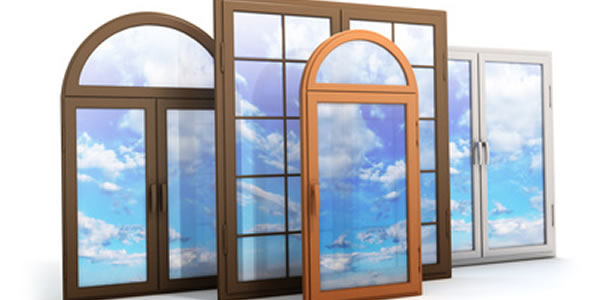Shopping for Windows?
If you are window shopping, you will want to choose a style based on your home’s architecture, the purpose or function of the window, and finally, your budget. The type of windows you select will affect the appearance of both the inside and outside of your home and can make a huge difference in the level of comfort and enjoyment of your home. To help you select windows that suit your home’s architecture, here is a primer to the different types of window styles:
Awning — This casement-type window, hinged from the top, opening outward from the bottom, generally has less air leakage, because the sash closes by pressing against the frame. Because of this design, awning windows shed water away from the window opening. Awning windows are typically installed over fixed windows or doors (as transoms), or in garages above eye level to provide ventilation and privacy at the same time. They are a good choice for windows that are wider than they are tall.
Bay and Bow — A typical bay window consists of a large center window bordered on either side by double-hung or casement windows set at 30- or 45-degree angles. All the windows can be stationary (fixed), operating (venting), or any combination of those. The bow window, similar to a bay window, consists of four or more equal-size windows, usually casements, that create a gradual arcing projection. Both bay and bow windows provide great open views, as well as give a room the aura of being larger than it really is. Adding a window seat is a popular addition to any bay or bow window.
Casement — A popular style featured in a wide variety of home designs, casement windows feature a single sash that’s hinged on the left or right and opens using a crank handle. That’s why they’re sometimes referred to as “crank out” windows. Casement windows offer more ventilation than double-hung windows, typically have less air leakage than other window styles, and look best if they are at least slightly taller than they are wide. Because they swing out, however, they may not be well suited to installation adjacent to heavy pedestrian traffic areas, such as decks or front porches.
Double-Hung — Double-hung windows feature two sash in a single frame. The top and bottom sash bypass each other vertically when sliding open from the bottom up or the top down. Double-hung windows look best when they are about twice as tall as they are wide and each sash is an equal-sized square. They are often installed in traditional or Victorian homes, or those featuring a classic or Colonial style.
Fixed — Often selected for decoration or in combination with other windows, fixed windows don’t open or vent. A circular or hexagonal window can be strategically placed to enhance a view or the exterior architecture of your home. Or, in a window wall, a fixed window can be flanked by venting units and topped with smaller fixed units, called transoms.
Single-Hung — Single-hung windows offer all the features and benefits of double hung windows, with one difference: only the bottom sash opens by sliding upward. The ventilation opening can be adjusted from a small area to one-half of the window area.
Sliding — Sliding windows, sometimes called gliders or sliders, function just as their name implies — moving horizontally side to side. Sliders are one of the most sleek, contemporary profiles in windows, and ideal for installing in those hard-to-reach areas, like over the kitchen sink. They also are commonly installed in multi-family buildings and apartment complexes. Sliders are typically available as single-sliding (only one sash moves) or double-sliding units.
Skylights — Many homeowners who don’t necessarily have the wall space to add a window to a room, but want the benefits of natural light and extra ventilation, opt to install a skylight. Depending upon their placement, skylights can bring in more direct light and heat than windows. Skylights are available with either manual or remote control operation to provide ventilation. Some units are even equipped with rain sensors that automatically close the window when precipitation is detected. Still other skylights offer room side blinds or shades for added light control.
Transom — Like fixed windows, transoms are most often used in combination with other windows, and can be either venting or fixed units. They are typically installed underneath the primary window units, or on top of a room’s primary windows. They help give a room the illusion of larger windows, allow in more light and, if venting units, may increase airflow. Transoms often are used to create a window wall. Transom windows are available in many different shapes, including square, rectangular, half-circle, elliptical, and many more.
Window Wall — Window walls help make a small room look larger maximizing the amount of light and ventilation. Also referred to as combination windows, they are literally a wall of windows in any combination of sizes, shapes and styles, sometimes stretching from floor to ceiling and wall to wall.
Courtesy: Homeservice Club

